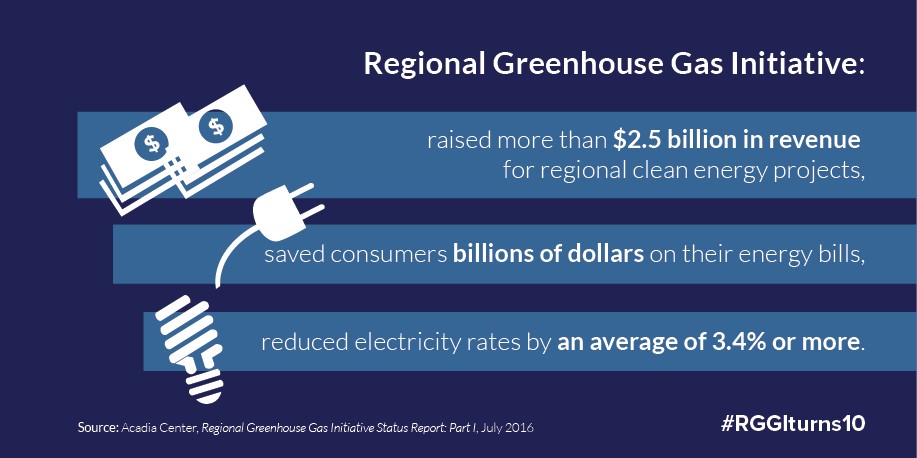A pioneering program to reduce power plant emissions in the Northeast is poised to enter a new phase. Here’s why the nine states of the Regional Greenhouse Gas Initiative need to make as bold a step forward as possible—and how they can make it happen.
The RGGI states in the Northeast and Mid-Atlantic—Connecticut, Delaware, Maine, Maryland, Massachusetts, New Hampshire, New York, Rhode Island, and Vermont—were right to lead the nation in addressing carbon pollution from power plants when they launched the program in 2009. And they were right to strengthen RGGI when they conducted the first program review in 2012.
RGGI has yielded clear results, as shown in analyses by the program itself and outside analyses.
Now the states are nearing the finish line of the second RGGI program review. And the need for stronger action by this important collection of states is even clearer.
Why it’s important
This is a time of incredible momentum in clean energy, with cities, states, utilities, companies, individuals, and more embracing so much of what’s possible. Technologies, policies, and actions are leading us to new heights on energy efficiency, renewable energy, and clean cars.
This is also a time of incredible need. With the Trump administration abdicating on climate leadership in pulling out of the Paris climate agreement, and working to kill the first-ever federal regulations on power plant pollution, the Clean Power Plan, regional leadership on climate and energy is more important than ever.

Technologies mean RGGI states can make much more progress, and quickly. (Credit: J. Rogers)
What RGGI state leaders must do
So this program review represents an incredible opportunity to strengthen RGGI. The Union of Concerned Scientists and its allies are calling for strengthening in several key areas:
A stronger target – RGGI’s defining characteristic is its declining regional cap on power plant carbon emissions. The region has a history of defining the cap much higher than circumstances—emissions and trajectories—warrant. And the emissions targets as currently set will not get the states the long-term emissions reductions that many have set via legislation, and that many of the region’s governors have committed to collectively.
In a recent letter to the RGGI governors, our coalition called on them to have the cap levels:
…reflect actual emissions levels and trends at its start, including emissions reductions that have outpaced earlier projections, and align with state and regional [greenhouse gas] targets in 2030.
What that means is something considerably stronger than the 2.5% annual tightening of the cap that has been in place since the program’s launch—at least 3.5% seems warranted—and an extension of the cap through at least 2030. The RGGI states, their utilities, innovators, and customers have proven their ability to cut emissions cost-effectively, and the program review is a chance to harness the power of that collective action.
Stronger complementary components – The program review is also an important chance for the RGGI states to strengthen other pieces of the program to help it live up to its true potential. That includes dealing with the surplus of emission allowances now in the hands of power plant owners; making sure that the protection against too-high prices is truly used for emergencies, not little price bumps; taking advantage of low allowance prices to move ahead more quickly; and making sure allowance prices don’t go too low. (See here for more details about each of these opportunities.)
Potential expansion – The successful RGGI framework could be expanded to other states (New Jersey, you’re welcome back anytime), or to other sectors such as transportation.
Stronger commitment to environmental justice – Last, but far from least, the program review offers an important opportunity not just to strengthen the program, but to ensure that RGGI’s benefits reach those who need them most—through consultation and through smart allocation of allowance revenues, for example. As our coalition letter says:
…the RGGI states must ensure that communities on the frontlines of the impacts of pollution and climate change have a say in how RGGI is implemented and how funds are distributed to ensure broad and equal opportunities to experience RGGI benefits. Strengthening the RGGI program in communities that bear the biggest burden of pollution is critical.
Bolder, stronger, further, fairer
The decision makers in the nine RGGI states have a golden opportunity to show real leadership on climate and energy, to put in place the stronger policies and targets that this time in history demands, and to seize all the rewards that come from boldness in climate action.
It’s up to you, RGGI leaders. Seize the day.

